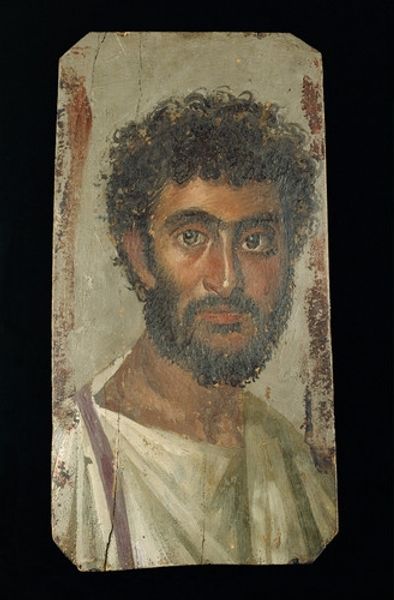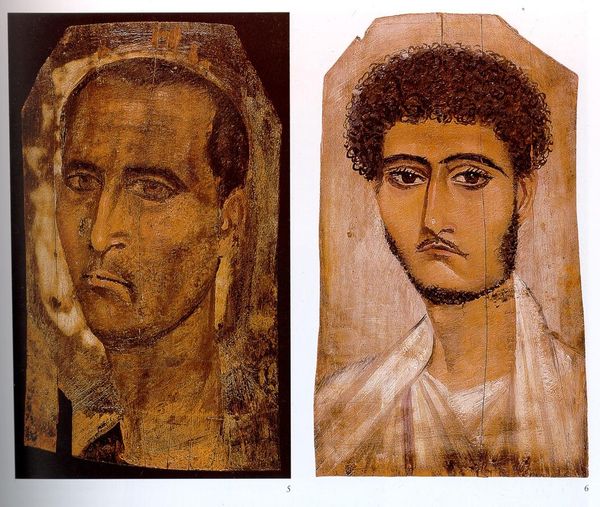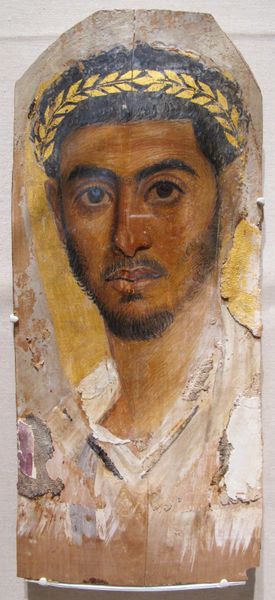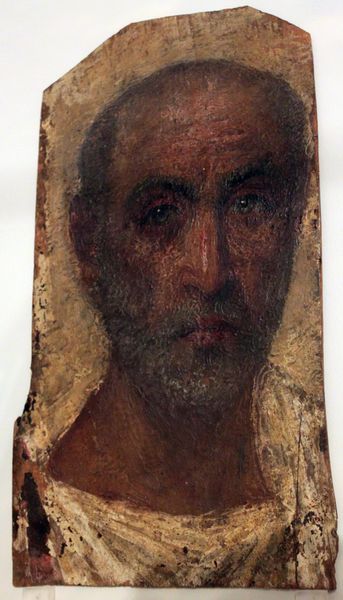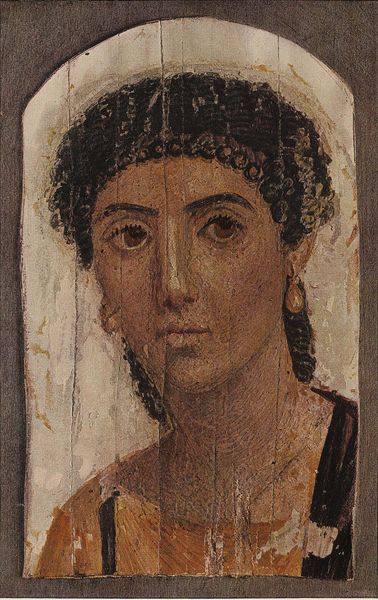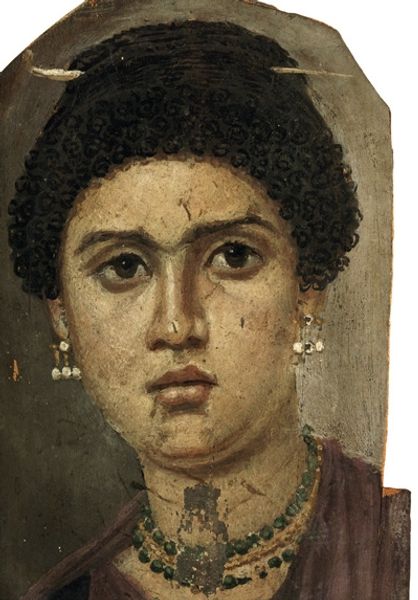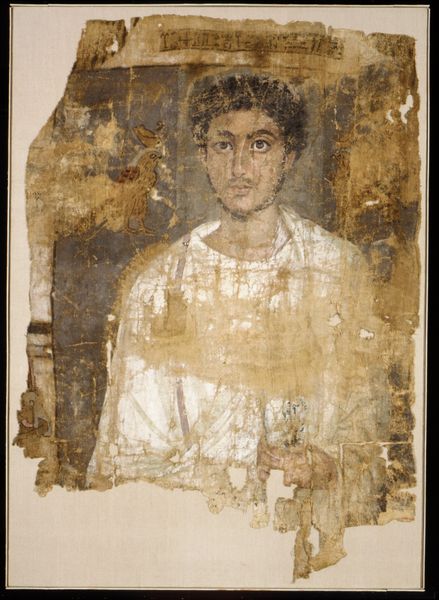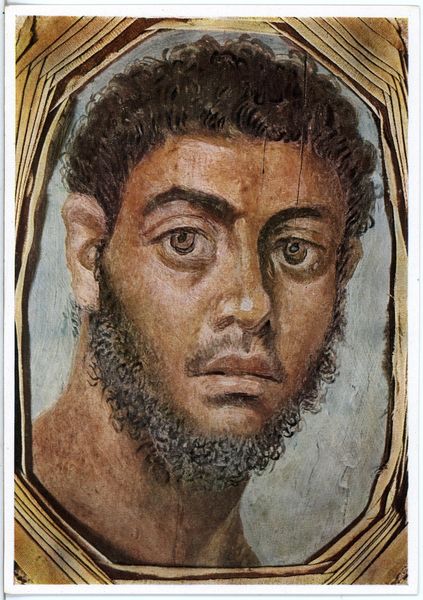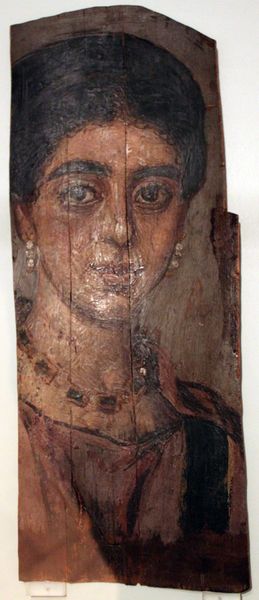
tempera, painting, fresco
#
portrait
#
head
#
face
#
tempera
#
painting
#
ancient-egyptian-art
#
fresco
#
oil painting
#
geometric
#
ancient-mediterranean
#
portrait drawing
Copyright: Public domain
Editor: Here we have a "Mummy Portrait of a Man Anagoria," a tempera painting from ancient Egypt, currently residing in the Alte Nationalgalerie in Berlin. There's something so striking about the direct gaze in this portrait; it feels very contemporary. What stands out to you about it? Curator: Well, the historical context is crucial here. These Fayum portraits weren't just art, they were integral to funerary practices during the Roman occupation of Egypt. Painted on wood panels, they were placed over the faces of mummies. We have to consider the convergence of Egyptian death rituals, Roman portraiture styles, and the social status of those who could afford such elaborate burials. Editor: So, it’s not just art for art’s sake, but a representation of a specific class within a complex cultural moment? Curator: Precisely. These portraits reflect the elite class who adopted Roman customs while still clinging to their Egyptian identity and beliefs about the afterlife. Consider how these images were commissioned, displayed briefly within the household, and then permanently entombed, changing their meaning and function across their existence. Do you think that transition affected their aesthetic? Editor: That's fascinating! It definitely makes you wonder how the artist approached it knowing the work was destined for a tomb versus public display. I suppose there was an awareness that the audience would shift from the living to the gods of the afterlife. Curator: Yes, and that plays into the politics of imagery – who is allowed to be seen, how they are seen, and by whom. The portrait’s realism, borrowing from Roman traditions, asserts a sense of individuality even in death, which speaks volumes about the socio-cultural aspirations of the patrons. Editor: I'll never look at mummy portraits the same way again. I initially thought it was a standalone portrait, but understanding its function and the blend of cultures involved really shifts my perspective. Thanks for shedding light on that! Curator: Indeed. Art always exists within a network of power, belief, and representation. Examining those connections makes us see the artwork, and the world, in richer ways.
Comments
No comments
Be the first to comment and join the conversation on the ultimate creative platform.

